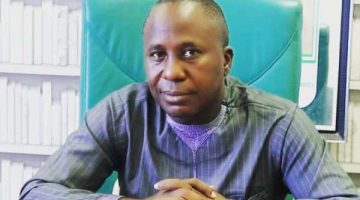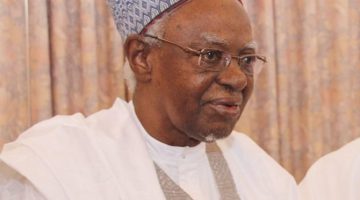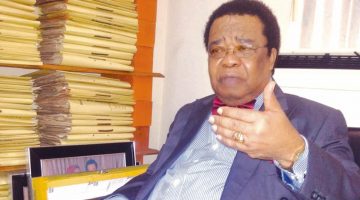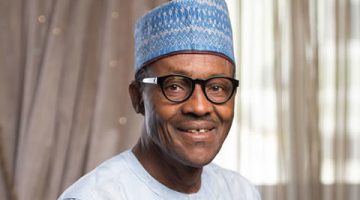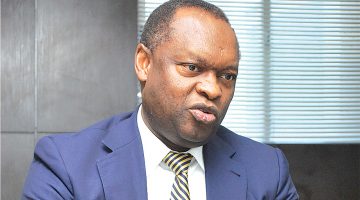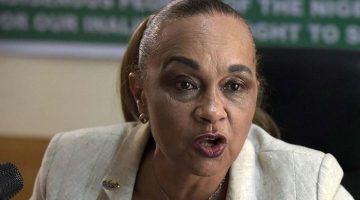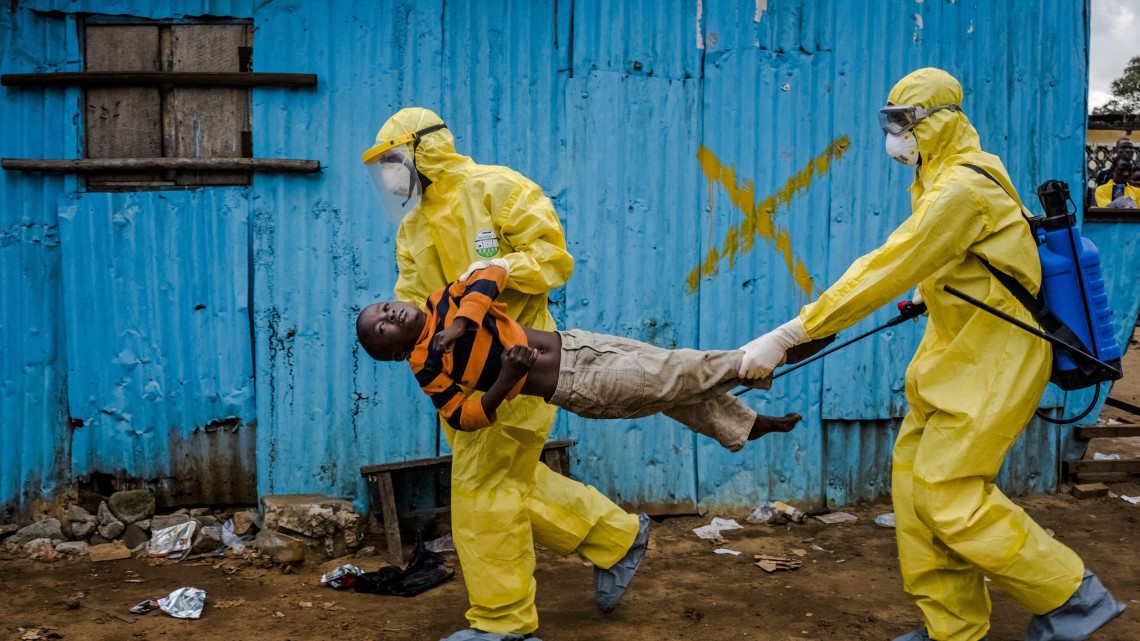• To declare countries disease-free on Oct. 20, Oct. 17
• Bitter kola may be novel ‘cure’
• Second health worker in U.S. tests positive
• New research shows how Nigeria stopped disease
CAUTIONING that the Ebola outbreaks in Nigeria and Senegal are not yet quite over, the World Health Organisation (WHO) disclosed yesterday that it would declare their end in the former country on October 17 and in the latter on October 20.
The Ebola situation assessment by the WHO published Wednesday suggests that the United Nations (UN)’s apex health body may declare Nigeria and Senegal Ebola-free within days.
This came amid growing acceptance of bitter kola as a possible cure for Ebola as Nigerians have now embraced the local seed for protection against viral infections.
Even Nigerian and United States scientists are beginning to have a second look at the possibilities put forward by Prof. Maurice Iwu.
A presentation of bitter kola seeds, kolaviron, GB-1 as possible post-exposure agents in the management of EVD by Iwu to the National Expert Committee on Ebola, which sat last week to review experimental drugs was greeted with very positive reactions.
Scientists at the review meeting including the Director General of the Nigeria Centre for Disease Control (NCDC), Prof. Abdulsalami Nasidi, Director General of the Nigerian Institute of Industrial Research (NIMR), Yaba, Lagos, Prof. Innocent Ujah, and the Director-General, Nigerian Institute of Pharmaceutical Research and Development (NIPRD), Prof. Karniyus Gamaliel, acknowledged that they had taken to bitter kola.
Indeed, Nigeria through the National Expert Committee on Ebola chaired by Gamaliel and the United States through the U.S. National Institute of Allergy and Infectious Diseases (NIAID), have begun an investigation into the bitter kola cure for EVD.
Already, Bioresources Institute of Nigeria (BION) has signed a non-clinical evaluation/cooperate research agreement with NIAID to investigate valuation compounds submitted by BION for activity against Ebola. The agreement covers pre-clinical and non-clinical tests.
The professor of pharmacy said the proposed project would consist of three related components: Standardised whole seed of Garcinia kola (bitter kola), which is currently available as Garcinia – IHP with the National Agency for Food, Drug Administration and Control (NAFDAC) number No. A7- 1328L; Good Manufacturing Practice (GMP) production of kolaviron for quality evaluation and bioactivity assays using procedure previously described and; preparative Isolation of Garcinia biflavonoids : scaled-up isolation of GB-1 & GB-2 sufficient for under mentioned biological investigations by InterCEDD Laboratories Nsukka.
InterCEDD Laboratories Nsukka and BION are subsidiaries of Bioresources Development Group (BDG) with Iwu as the Executive Director.
Iwu said the scope of work to be undertaken would include pre-clinical bioavailability studies and the determination of the most appropriate mode and route of administration, efficacy studies in non-human primates, human safety determination in phase-one clinical trials, and limited clinical outcome evaluation if approved by relevant clinical committees and agencies.
How does bitter kola protect against Ebola?
Iwu said: “The biflavonoids of the seeds of Garcinia Kola Heckel have shown remarkable broad spectrum antiviral activity in vitro against a variety of viruses including Punta Toro, Pichinde, Sandfly fever, Influenza A, Venezuelan Equine Encephalomyelitis and Ebola, with IC50 values of 7.2-32 μg/ml and MTC of more than 320 μg/ml.
“These biflavonoids have also been shown to possess anti-hepatotoxic, antioxidant, anti-inflammatory and immune enhancing activities in a variety of in vitro and in vivo studies. It is proposed that because Garcinia kola constituents have both antiviral activity and remarkable inhibitory activity against pro-inflammatory cytokines and chemokines, with a long history of safety, that Garcinia biflavonoids should be evaluated for possible use in the early management of human exposure to Ebola virus and/or treatment of the disease, as a means of controlling the massive viral replication and also ameliorate the dysregulated inflammation associated with the onset of the infection.
“Although the pathogenesis of Ebola haemorrhagic fever disease is not well understood, the major clinical features appear to result from intense inflammatory response resembling septic shock.
“Studies in nonhuman primate models have shown that monocytes, macrophages and dendritic cells, the ubiquitous ‘sentinels’ that normally guard the body against microbial invasion, are the major sites of initial viral replication and play the central role in the pathogenesis. The virus is then distributed by circulating monocytes/ macrophages to a wide variety of organs and cell types. The system-wide release of pro-inflammatory cytokines and chemokines by these infected cells causes fever, vascular instability, hypotension and shock, and ultimately multi-organ system failure.
“However, the acute infection of humans with Ebola often results in a paradoxical pattern of immune responses: whereas the early infection is characterised by an outpouring of inflammatory mediators such as interferon (IFN)- α, IFN- β, interleukin (IL)-6, IL-18, MIP-1 α, and MIP-1 β indicating occurrence of pro- inflammatory response. Yet late stage infections are associated with poor immune responses.
“The mechanisms underlying these diverse outcomes are poorly understood. It has been suggested that infection of mononuclear phagocytes is critical, triggering a cascade of events involving cytokines/chemokines and oxygen free radicals. It is the consequence of these events rather than direct viral infection that results in much of the observed pathology.
“Available data also suggest that a strong well regulated innate inflammatory response is associated with a better outcome after EBOV infection. Ebola virus (EBOV, formerly designated Zaire ebolavirus) is one of five known viruses within the genus Ebolavirus.
“It is hereby proposed that Garcinia kola can ameliorate the virus induced suppression of cellular immunity during Ebola virus infection because of its inhibitory effects which involves modulation of multiple signalling of several pro-inflammation pathways/ targets. Kolaviron isolated from Garcinia kola has been shown to interfere with LPS signalling by reducing the activation of several inflammatory transcription factors and that its inhibitory action on IL-6 secretion correlates with inhibition of ERK1/2, p38, Akt, p-c-JUN and JNK signalling pathways; inhibition of dimethyl nitrosamine-induced hepatotoxicity by suppressing COX-2 and iNOS expression: NF-kB and AP-1 as potential molecular targets; protective effects on the neurons of the hippocampus and cerebellum of malnourished mice challenged with the neurotoxin, 3-Nitropropionic acid9; inhibition of tyrosinase10, and reduction of cadmium-induced effects on raw U937 cells and U937-derived macrophages.
“Garcinia biflavonoids also possess strong antioxidant activity which may be useful in protecting the infected cells from the reactive oxygen (ROS)-mediated neuronal cell death associated with Ebola virus infection. There is abundance of literature on the role of oxidative stress in the pathogenesis of viral infections.
Garcinia biflavonoids, Kolaviron belong to a large family of compounds called flavonoids. Flavonoids are interesting compounds that are wide-spread in plants as products of their secondary metabolism and are regularly ingested in small quantities from many edible plants. A propriety product, Garcinia – IHP (NAFDAC No. A7-1328L) has been in pharmacies since 2012.
“Kolaviron and its constituents are unique among flavonoids in that their sub-group, Garcinia biflavonoids (dimeric Eriodictyol) are restricted only to the plant genus Garcinia, and the principal compounds GB-1, GB-2 and kolaflavanone have been found to occur only in the bitter kola, Garcinia kola. Their structures offer significant bioavailability advantages over their monomeric counterparts. A monomeric flavonoid, genistein, a kinase inhibitor has been shown to inhibit Lassa virus and Ebola virus in vitro as a cocktail with tyrphostin.”
The WHO Ebola situation assessment reads: “If the active surveillance for new cases that is currently in place continues, and no new cases are detected, WHO will declare the end of the outbreak of Ebola virus disease in Senegal on Friday 17 October. Likewise, Nigeria is expected to have passed through the requisite 42 days, with active surveillance for new cases in place and none detected, on Monday, October 20.
“For Nigeria, WHO confirms that tracing of people known to have contact with an Ebola patient reached 100 per cent in Lagos and 98 per cent in Port Harcourt. In a piece of world-class epidemiological detective work, all confirmed cases in Nigeria were eventually linked back to the Liberian air traveller who introduced the virus into the country on July 20.
“The anticipated declaration by WHO that the outbreaks in these two countries are over will give the world some welcome news in an epidemic that elsewhere remains out of control in three West African nations.
“In Guinea, Liberia, and Sierra Leone, new cases continue to explode in areas that looked like they were coming under control. An unusual characteristic of this epidemic is a persistent cyclical pattern of gradual dips in the number of new cases, followed by sudden flare-ups. WHO epidemiologists see no signs that the outbreaks in any of these three countries are coming under control.”
How does WHO declare the end of an Ebola outbreak?
A WHO subcommittee on surveillance, epidemiology, and laboratory testing is responsible for establishing the date of the end of an Ebola outbreak.
The date is fixed according to rigorous epidemiological criteria that include the date when the last case with a high-risk exposure completes 21 days of close medical monitoring and tests negative for the virus.
According to WHO recommendations, health care workers who have attended patients or cleaned their rooms should be considered as “close contacts” and monitored for 21 days after the last exposure, even if their contact with a patient occurred when they were fully protected by wearing personal protective equipment.
For health care workers, the date of the “last infectious contact” is the day when the last patient in a health facility tests negative using a real-time reverse-transcriptase polymerase chain reaction (RT-PCR) test.
For WHO to declare an Ebola outbreak over, a country must pass through 42 days, with active surveillance demonstrably in place, supported by good diagnostic capacity, and with no new cases detected. Active surveillance is essential to detect chains of transmission that might otherwise remain hidden.
Incubation period
The period of 42 days, with active case-finding in place, is twice the maximum incubation period for Ebola virus disease and is considered by WHO as sufficient to generate confidence in a declaration that an Ebola outbreak has ended.
Recent studies conducted in West Africa have demonstrated that 95 per cent of confirmed cases have an incubation period in the range of 1 to 21 days; 98 per cent have an incubation period that falls within the one to 42 day interval. WHO is therefore confident that detection of no new cases, with active surveillance in place, throughout this 42-day period means that an Ebola outbreak is indeed over.
The announcement that the outbreaks are over, in line with the dates fixed by the subcommittee on surveillance, epidemiology, and laboratory testing, is made by the governments of the affected countries in close collaboration with WHO and its international partners.
WHO recommendations for testing for Ebola virus disease and confirming a case
WHO said it was alarmed by media reports of suspected Ebola cases imported into new countries that are said, by government officials or ministries of health, to be discarded as “negative” within hours after the suspected case enters the country.
Such rapid determination of infection status is impossible, casting grave doubts on some of the official information that is being communicated to the public and the media.
For early detection of Ebola virus in suspected or probable cases, detection of viral ribonucleic acid (RNA) or viral antigen is the recommended test.
Laboratory-confirmed cases must test positive for the presence of the Ebola virus, either by detection of viral RNA by RT-PCR, and/or by detection of Ebola antigen by a specific Antigen detection test, and/or by detection of immunoglobulin M (IgM) antibodies directed against Ebola.
Two negative RT-PCR test results, at least 48 hours apart, are required for a clinically asymptomatic patient to be discharged from hospital, or for a suspected Ebola case to be discarded as testing negative for the virus.
Laboratory results should be communicated to WHO as quickly as possible, in addition to reporting under the requirements and within the timelines set out in the International Health Regulations, which are administered by WHO.
WHO recommends that the first 25 positive cases and 50 negative specimens detected by a country without a recognized national reference viral haemorrhagic fever laboratory should be sent for secondary confirmatory testing to a WHO collaborating centre, designed as specialized in the safe detection (at biosafety level IV) of viral haemorrhagic fevers.
Similarly, for countries with a national reference laboratory for viral haemorrhagic fevers, the initial positive cases should also be sent to a WHO collaborating centre for confirmation.
Meanwhile, new Ebola research demonstrates that quick and forceful implementation of control interventions are necessary to control outbreaks and avoid far worse scenarios.
Researchers analyzed up-to-date epidemiological data of Ebola cases in Nigeria as of October 1, 2014, in order to estimate the case fatality rate, proportion of health care workers infected, transmission progression and impact of control interventions on the size of the epidemic.
Senior author of the research and associate professor in the School of Human Evolution and Social Change in the College of Liberal Arts and Sciences, Arizona State University, United States, Gerardo Chowell, said: “Rapid and forceful control measures are necessary as is demonstrated by the Nigerian success story. This is critically important for countries in the West African region that are not yet affected by the Ebola epidemic, as well as for countries in other regions of the world that risk importation of the disease.”
For the paper, “Transmission dynamics and control of Ebola Virus Disease (EVD) outbreak in Nigeria, July-September, 2014,” published on Monday in Eurosurveillance, researchers used epidemic modeling to project the size of the outbreak in Nigeria if control interventions had been implemented during various time periods after the initial case and estimated how many cases had thus been prevented by early initiation of interventions.
Control measures enacted in Nigeria included all people showing Ebola symptoms being held in an isolation ward if they had contact with the initial case. Once Ebola was confirmed through testing, people with Ebola were moved to a treatment centre.
Asymptomatic individuals were separated from those showing symptoms and those who tested negative without symptoms were discharged. People who tested negative, but showed symptoms – fever, vomiting, sore throat and diarrhea – were observed and discharged after 21 days if they were free of symptoms, while being kept apart from people who tested positive for the disease.
A senior scientist and lead author of the study at the University of Pretoria, South Africa, Folorunso Oludayo Fasina, said: “The swift control of the outbreak in Nigeria was likely facilitated by early detection of the initial case in combination with intense tracing efforts of all subsequent contacts that the person had after developing Ebola.
“By contrast, the initial outbreak in Guinea remained undetected for several weeks, facilitating the spread of the virus to Sierra Leone and Liberia where the inability to track and contain infectious individuals compounded the situation and resulted in an uncontrolled epidemic.”
Besides, according to the Centers for Disease Control and Prevention (CDC) a second health worker in Dallas, United States, has tested positive for Ebola.
The news comes after officials announced the first-ever case of Ebola transmission in the United States on Sunday involving Nina Pham, a 26-year-old nurse who cared for the Liberian patient who died from Ebola in Dallas. Pham is in isolation and remains in good condition.
The second health worker to become infected also contracted the virus while caring for Liberian Thomas Eric Duncan at Texas Health Presbyterian.
“The patient was isolated after an initial report of a fever and remains so now,” the CDC said in a statement. Confirmation testing is being done, the health worker is being monitored for symptoms, and the CDC is following up with the patient’s contacts.
“As we have said before,” the CDC statement read, “because of our ongoing investigation, it is not unexpected that there would be additional exposures.”


